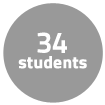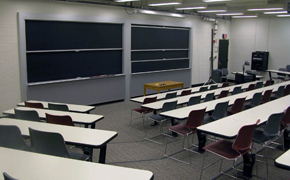Instructor Insights pages are part of the OCW Educator initiative, which seeks to enhance the value of OCW for educators.
Course Overview
This page focuses on the course 8.422 Atomic and Optical Physics II as it was taught by Professor Wolfgang Ketterle in Spring 2013.
This graduate-level course is the second of a two-semester subject sequence beginning with 8.421 Atomic and Optical Physics I that provides the foundations for contemporary research in selected areas of atomic and optical physics.
Course Outcomes
Course Goals for Students
The purpose of this two-semester subject sequence is to introduce graduate students to the concepts of atomic physics and to prepare them for cutting-edge research.
Possibilities for Further Study/Careers
Cold atoms are often used to address problems of condensed matter physics, so many students who take this subject sequence go on to take 8.511 Theory of Solids I and 8.512 Theory of Solids II. Some students take a course, taught by Eugene Demler at Harvard, called  Special Topics in Condensed Matter Physics (PDF). Others go on to take courses in quantum computation.
Special Topics in Condensed Matter Physics (PDF). Others go on to take courses in quantum computation.
In the following pages Wolfgang Ketterle describes various aspects of how he teaches 8.422 Atomic and Optical Physics II.
- Clicker Questions
- Using a Tablet Computer During Lectures
- Assessing Students' Writing
- Teaching Graduate Students
Curriculum Information
Prerequisite
Requirements Satisfied
This course may be applied toward a doctoral degree in physics with the approval of the candidate’s committee.
Offered
Atomic physics is taught every spring semester, alternating between 8.421 Atomic and Optical Physics I and 8.422 Atomic and Optical Physics II. Depending on when they matriculate, students begin with either 8.421 or 8.422. It is somewhat more logical to go from fundamental concepts to more advanced topics, but the reverse sequence also works well.
Assessment
The students' grades were based on the following activities:
 50% Assignments
50% Assignments 50% Term paper
50% Term paperStudent Information

Breakdown by Year
Graduate students
Breakdown by Major
Predominantly physics majors
Ideal Class Size
This class should have at least 10-15 students to allow for active discussions.
During an average week, students were expected to spend 12 hours on the course, roughly divided as follows:
Lecture
- Met 2 times per week for 1.5 hours per session; 25 sessions total; voluntary attendance.
- Lectures typically began with a brief summary of previously covered content, an introduction to the focus of the current lecture, and a preview of what would be covered next.
- Lectures consisted of instructor-led presentations and questions from students.
-
Clicker questions
 were occasionally used to gauge students’ understanding during lectures.
were occasionally used to gauge students’ understanding during lectures.
Out of Class
- Students completed readings, problem sets, and a term paper.
Semester Breakdown
| WEEK | M | T | W | Th | F |
|---|---|---|---|---|---|
| 1 |  |  |  |  |  |
| 2 |  |  |  |  |  |
| 3 |  |  |  |  |  |
| 4 |  |  |  |  |  |
| 5 |  |  |  |  |  |
| 6 |  |  |  |  |  |
| 7 |  |  |  |  |  |
| 8 |  |  |  |  |  |
| 9 |  |  |  |  |  |
| 10 |  |  |  |  |  |
| 11 |  |  |  |  |  |
| 12 |  |  |  |  |  |
| 13 |  |  |  |  |  |
| 14 |  |  |  |  |  |
| 15 |  |  |  |  |  |
| 16 |  |  |  |  |  |
 No classes throughout MIT
No classes throughout MIT Lecture session
Lecture session Office hours
Office hours No class session scheduled
No class session scheduled Assignment due date
Assignment due dateLead Instructor (Prof. Wolfgang Ketterle)
- Developed and delivered lectures
- Assessed students’ term papers
- Held office hours for consultations


 Room 1 of 1
Room 1 of 1 